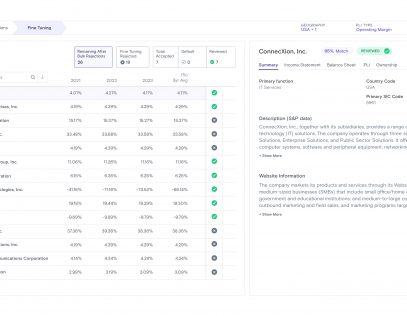Cases like Coca-Cola, 3M, and Medtronic cases have emboldened the IRS when it comes to taking on transfer pricing disputes. And if the courts continue to side with the agency through the appeals processes, then the IRS is potentially looking at billions of dollars in payouts.
Experts expect the IRS to allocate a large portion of the Inflation Reduction Act’s $80 billion funding towards improving—and increasing—transfer pricing examinations. And no organization will be exempt from scrutiny.
In fact, $46 billion is expected to go towards enforcement alone. The agency plans to invest in analytical tools to flag data from country-by-country reporting, hire more economists to review documentation and reports, and enlist more attorneys to navigate legal disputes. While we won’t necessarily see the IRS take on more types of transfer pricing examinations, we are sure to see an increase in the number of examinations, audits, and even penalties.
As is the case with many global tax authorities, transfer pricing transactions involving the shift of intellectual property will be under the IRS microscope. Incidentally, such transactions have become big wins for the agency. Now armed with legal precedent, courtesy of the 2020 Coca-Cola case decision, as well as new funding, and motivation, the IRS is flexing even more muscle, and planning to assess penalties and adjustments against multinational companies for transfer pricing infringements.
“We continue to look more closely at cases, even those with transfer pricing documentation, to determine when it’s appropriate to assert penalties,” said Holly Paz, acting commissioner of the IRS Large Business and International Division.
Fortunately for MNCs, tax authorities have never been accused of moving quickly and it will take time for the IRS to get compliance resources in place. Use that time to build a transfer pricing foundation now to help you deal with the IRS later.
Where do you start? Here are five things we advise our clients to do:
Practice consistency. Consistency throughout your whole organization (not just your tax department) is a must. This means that your current transactions should mirror intercompany agreements and transfer pricing policies—and, of course, should reflect the reality of your business today. Initiate a streamlined approach to transfer pricing throughout your group, so documentation, reports, and policies are updated the same way. Also, pay attention to social media. Know if what’s being said about your company externally coincides with the internal narrative? If not, expect questions.
Know where you’re at risk. The IRS’ compliance campaigns reveal the types of issued-based examinations that they’ll be conducting—inbound distributors, for example, who haven’t earned profits that appropriately align with functions, assets, and risks. See which of your intercompany transactions are vulnerable and adjust.
Prepare country-by-country reports that are consistent with other documentation. When country-by-country reports first came on the scene in 2015, experts doubted whether agencies, including the IRS, would have the tools needed to assess the data and determine the low-hanging fruit. But now, new funding is expected to go towards analytical tools to review data and assess risk. Couple that with the new staff economists and the agency will have no trouble seeing which companies are at high risk of base erosion and profit shifting.
Forget the past. Many multinational companies have been known to think that their transfer pricing won’t be examined simply because it slid under the radar previously. Transfer pricing in the U.S. will attract IRS scrutiny for big companies, small companies, those that have been audited, and those that haven’t. Say goodbye to yesterday’s IRS and act as though you’re dealing with a brand-new, confident tax authority because essentially, you are.
Document, document, document. As with any global tax authority, transfer pricing documentation is the best way to demonstrate arm’s length transfer prices, but you can’t just dial it in. With COVID-19 disruptions still wreaking havoc on supply chains, rampant inflation, rising interest rates, and a possible recession on the horizon, transfer pricing documentation can inadvertently wave all kinds of red flags. This brave new IRS is sure to see them. Prepare robust documentation with real analyses, not just number crunching, and conduct in-house prophylactic audits to make sure you’re telling a consistent, sound story. After all, it’s always better to answer questions before the IRS—or any other tax authority—has a chance to ask.








